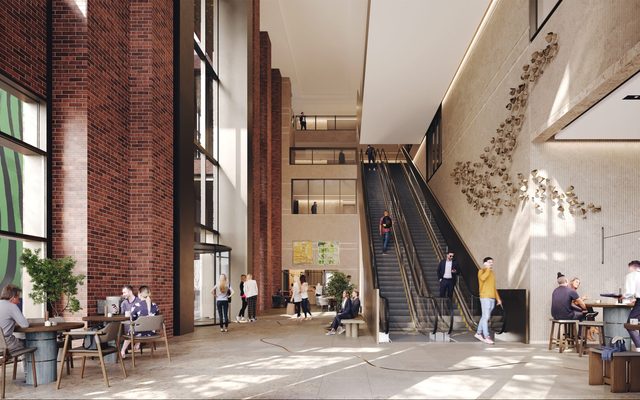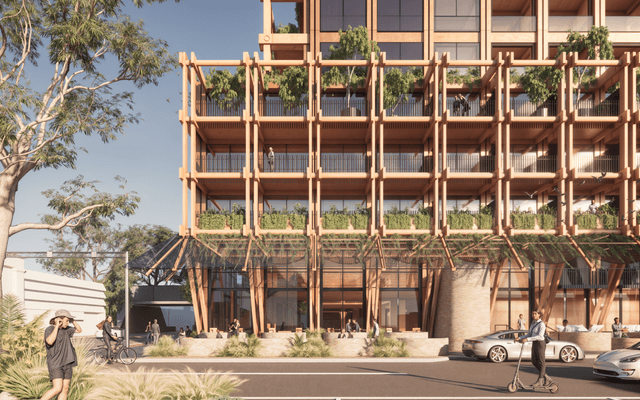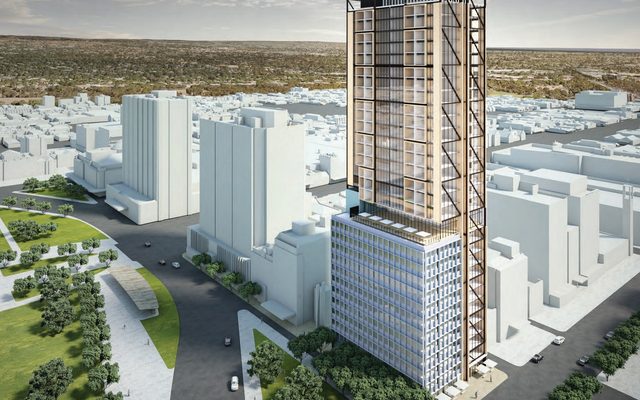This article is from the Australian Property Journal archive
The federal government’s Clean Energy Finance Corporation (CEFC) is investing $70 million in US company Hines’ 15-level hybrid timber office building in Melbourne’s inner suburb of Collingwood as it starts backing projects that will reduce embodied carbon emissions.
Hines acquired the Wellington Street site in 2019 for $28.5 million and was set to commence speculative construction on the building, now named T3 Collingwood, last year.
The project has also attracted finance from the Madigan Active Debt Fund, backed by the Victorian Funds Management Corporation.
The CEFC’s debt finance commitment makes T3 Collingwood the first project to be financed through the specialist CEFC Timber Building Program. The CEFC has nominally allocated $300 million to the Timber Building Program, to help kick-start mass timber construction in Australia, which has the potential to substantially reduce embodied carbon.
The hybrid construction approach will feature a glue-laminated timber structure with cross-laminated timber flooring on top of five reinforced concrete podium levels. Timber will be sustainably sourced from Victorian manufacturers, XLam Australia and Australian Sustainable Hardwoods.
T3 Collingwood will use about 4,000 cubic metres of wood for the structural frame, fixing in place about 3,000 tons of carbon. Including biogenic carbon storage, embodied carbon emitted during construction – in processes such as raw material procurement, manufacturing, construction and demolition – is equal to an emissions reduction of approximately 40% compared with the equivalent use of reinforced concrete. Once operational it will target net zero emissions.
“We are very pleased to announce T3 Collingwood as our first investment under the innovative CEFC Timber Building Program, which aims to encourage the use of mass timber in the construction sector,” CEFC CEO Ian Learmonth said.
“Mass timber can play an important role in decarbonising the buildings that make up our cities and this investment showcases how timber can be used to change the way we approach commercial scale buildings.”
The CEFC has found that the use of mass timber construction methods can cut up to 75% of embodied carbon emissions compared with conventional steel and concrete designs.
“The commercial property sector has been making significant progress to reduce operational carbon, and we are pleased to now be accelerating the focus on embodied carbon,” Learmonth said.
“Timber has a vital role to play in addressing embodied carbon and represents the next frontier for the property industry. This project encourages owners, developers, architects, engineers and builders to use mass timber as an alternative to conventional construction materials such as concrete and steel for their projects.”
Hines Australia managing director Simon Nasa said mass timber construction is an important step in driving a sustainable future for the built environment.
“Not only is timber a completely renewable resource, but timber offices are also biophilic in creating a more natural working environment for tenants and their staff,” he said, adding that this results in increased productivity and better mental health outcomes.
T3 Collingwood will be the first Australian addition to the Hines T3 global portfolio, a timber, transit and technology-orientated development methodology.
In Sydney, Atlassian will be moving into a $1.4 billion, 40-storey hybrid timber building in the burgeoning Tech Central precinct, which will be the tallest building of its kind.




